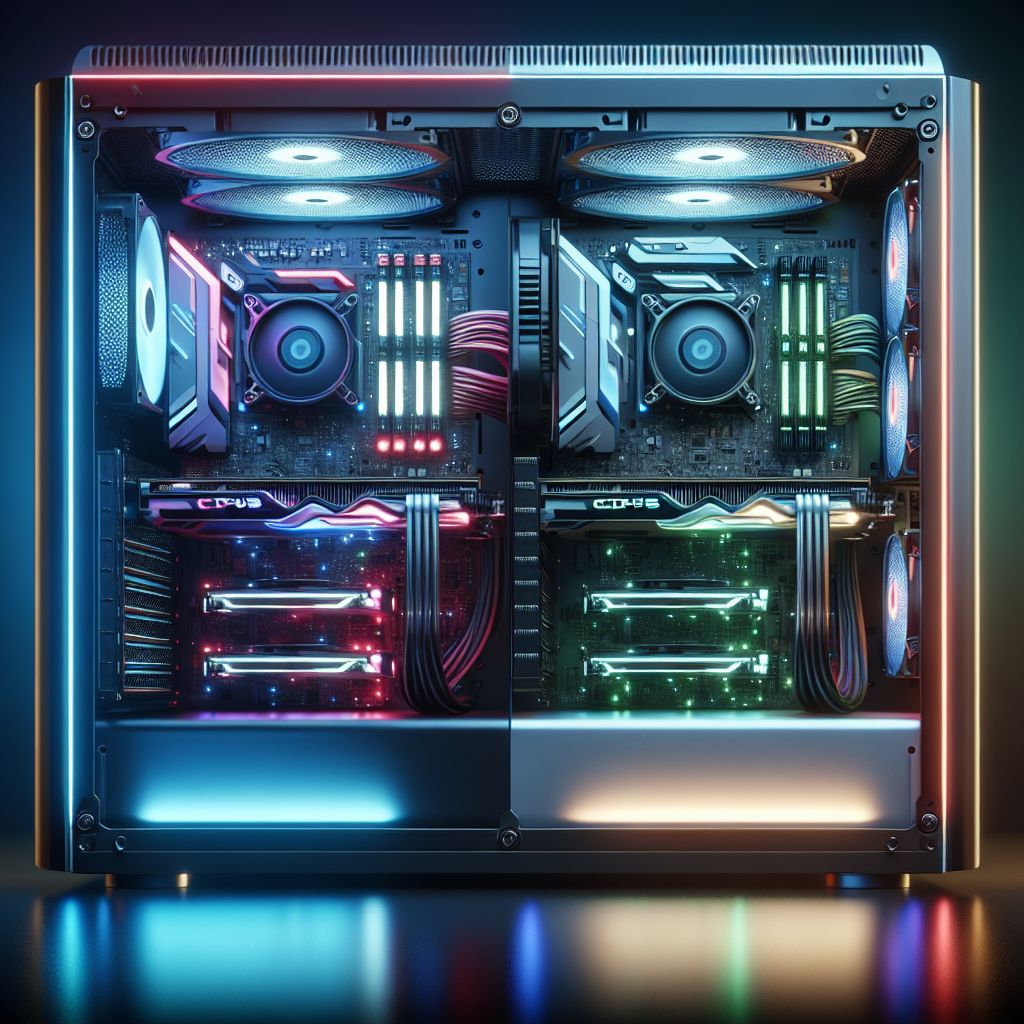In the ever-evolving world of gaming and computing, enthusiasts and professionals alike are continually searching for ways to enhance their gaming experience. Among the myriad innovations, dual-system setups within a single case have emerged as a popular solution. But why are some gaming PCs designed with dual-system setups in one case? This article delves into the multitude of reasons behind this trend, from performance benefits to cost efficiency and convenience for streamers and professionals.
1. Enhanced Performance
1.1 Dedicated Resources
One of the primary reasons for opting for a dual-system setup is the ability to allocate dedicated resources to different tasks. A dual-system configuration allows one system to handle gaming, while the other focuses on streaming, video editing, or running demanding applications without compromising performance.
1.2 Tailored Hardware
Gamers and professionals can tailor each system with specific hardware that best suits their individual needs. For instance, a high-end CPU and GPU can be allocated to the gaming rig, while a system designed for streaming might prioritize a powerful CPU with multiple cores and efficient cooling solutions.
2. Cost Efficiency
2.1 Shared Components
While a dual-system setup might initially seem more expensive, it can often be more cost-efficient in the long run. Shared components, such as the power supply, cooling solutions, and case, reduce the overall cost compared to building two completely separate systems.
2.2 Upgrade Path
Having two systems in one case allows for more strategic upgrades. Users can enhance one system as needed without having to replace or upgrade the other, providing a flexible and economical approach to maintaining cutting-edge performance.
3. Convenience for Streamers and Professionals
3.1 Streamlining Workflows
Streamers, content creators, and professionals often require multitasking capabilities. A dual-system setup enables users to seamlessly switch between gaming, streaming, and other professional work without the need for multiple devices or cumbersome transitions.
3.2 Reduced Cable Clutter
Managing multiple systems typically involves extensive cabling, which can create a chaotic and inefficient workspace. A dual-system setup within a single case significantly reduces cable clutter, leading to a cleaner and more organized environment.
4. Expanded Functionality
4.1 Multiple Operating Systems
Dual-system setups can host multiple operating systems, catering to users who need the versatility of running different OS environments. For instance, a professional might run Windows on one system for specific software compatibility, while using Linux on the other for development purposes.
4.2 Redundancy and Backup
Having two systems in one case also provides redundancy and backup options. In the event of a system failure, the second system can serve as a temporary backup, ensuring minimal downtime and continued productivity.
Table: Dual-System Setup Advantages
| Advantage | Description |
|---|---|
| Enhanced Performance | Dedicated resources, tailored hardware |
| Cost Efficiency | Shared components, strategic upgrades |
| Convenience | Streamlined workflows, reduced cable clutter |
| Expanded Functionality | Multiple OS, redundancy & backup |
5. Technical Challenges and Considerations
5.1 Thermal Management
One of the significant challenges of a dual-system setup is thermal management. Ensuring adequate cooling for two high-performance systems within a single case requires careful planning and efficient cooling solutions.
5.2 Power Supply Demands
Running two systems off a single power supply unit (PSU) necessitates a robust and reliable PSU that can handle the increased power demands. Users must consider the total wattage required by both systems to avoid potential power issues.
5.3 Compatibility
Compatibility between components is crucial in a dual-system setup. Ensuring that both motherboards, cooling solutions, and other hardware components fit and function properly within one case requires meticulous selection and planning.
Conclusion
The trend of designing gaming PCs with dual-system setups in one case is driven by a combination of performance enhancement, cost efficiency, convenience, and expanded functionality. Streamers, content creators, and professionals in particular, benefit greatly from the ability to allocate dedicated resources, streamline workflows, and maintain a clean and organized workspace. While there are technical challenges to consider, the advantages often outweigh the complexities, making dual-system setups a compelling option for those seeking to optimize their computing experience.

